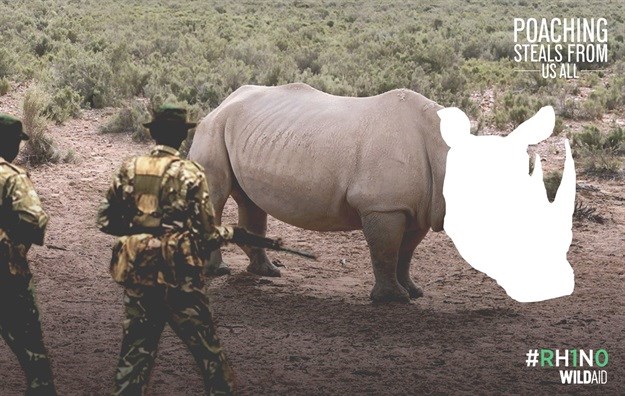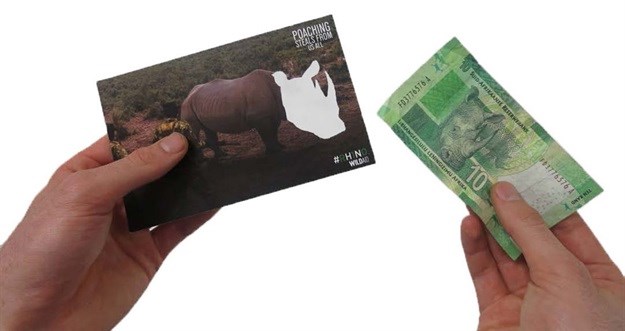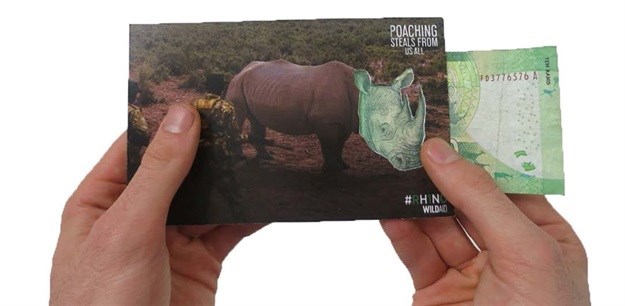WildAid, impressed by the concept created by Team Aitch, an 'agency' of students participating in the Vega School of Brand Leadership's annual Brand Challenge, has charged ahead with it in its latest video campaign.

Alexander Sudheim
WildAid is a wildlife conservation organisation that aims to raise funds and awareness against rhino poaching in South Africa. To find out more about the Vega Brand Challenge, team Aitch's WildAid campaign, and the role of design in SA, we interviewed senior copywriting navigator Alexander Sudheim of the Vega School of Brand Leadership.
What is the Brand Challenge all about? How does it help Vega students get a leg up in the industry?
The experience is designed to support the Vega purpose of making students industry-ready. By working with real clients on real-world briefs, the exercise raises the stakes by seeing students working outside of the insular academic environment so as to apply their learnings in a manner that has tangible significance. From the industry perspective, it affords insight into how a potential employee has dealt with actual clients and astutely handled tricky briefs.
Tell us more about the brief provided by WildAid and how this brief was met.
WildAid was in possession of the results of recently-commissioned market research which was tremendously revealing. It showed that the abhorrence of the slaughter of rhinoceros for their horns was shared by South Africans from all walks of life and not a cause celébre among those with time and money to spare. As a result, the brief from WildAid was to create a campaign that reflected the reality of how rhino poaching affects us all, as South Africans; how this scourge was something that impacted upon our collective national identity. The brief was met via a concept that carried the message of “this horror affects us all”.
Describe the video concept, what wow'ed the client about it.
The video concept was an extension of the students’ campaign concept of “Rhino Poaching Devalues Us All”. Value being something that can be measured in both tangible and intangible terms, the video concept collapsed the two to demonstrate how value in the abstract sense can hit home hard when contextualised in a very real way. The client loved the universality of the concept since it dealt with an indispensable element of every South African’s life.
Another interesting aspect of the campaign was the manipulation of the R10 note, could you expand on this?
The concept of “value” is a familiar one. Yet the term is bandied about so much that, ironically, it hovers in danger of losing value. The rhinoceros is an invaluable asset to South Africa. If they all get butchered for the sake of a myth that eating their powdered horn enhances priapism, the loss is incalculable. For one, South Africa, so proud of its Big 5, will now have a Big 4. But how to communicate this loss of value to the majority of South Africans who have never seen a rhino IRL? Well, through the medium in which all have encountered a rhino: the R10 note. Seeing the R10 note suddenly disappeared from their lives makes the reality of the rhino itself having disappeared from their lives so much more palpable.
How can design be used most effectively in addressing South Africa's challenges?
Design per se is a somewhat troubled term. It is too commonly associated with superficial aesthetic appeal and this is something it requires rescuing from. From providing solutions to landmine clearance to attempts to reduce the claustrophobia of high-density urban environments, design is everywhere. If you really think about it, Alexander Fleming discovered an incredibly clever way to design bread mould in such a manner that it killed infection. Penicillin, in other words, is a fantastic example of how design thinking provided a solution to a seemingly insoluble problem.
As such, it is design thinking more than design that has the potential to play a powerful role in overcoming South Africa’s challenges. We showed fractured communities a way forward with the TRC and showed the world how to keep high seas at bay with the inimitable dolos: with the ingenuity, innovation and hunger to fulfil the promise of progress, thinking design is the only way to think.
Team Aitch is Tarryn Prior, Tasmin Weir, Emma Wilson, Butetsi Bugaari, Sasha Benjamin, Leandra Dreyer, David Wilkinson, and Ashley Meyers.














































